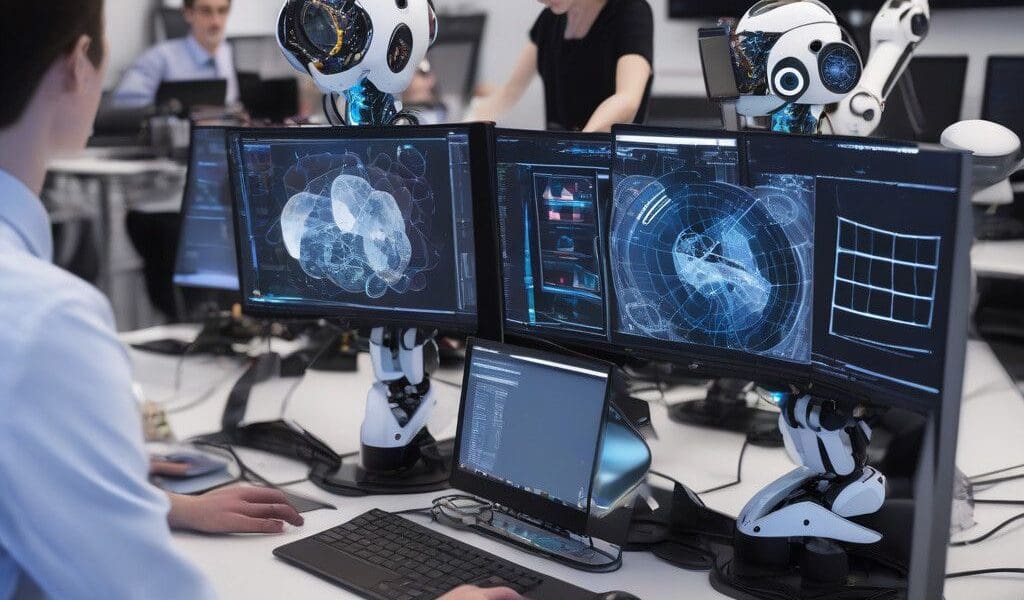Genima: Revolutionizing Robotics with AI Image-Based Learning
The field of robotics is witnessing a significant transformation thanks to innovations in artificial intelligence (AI). One such advancement is Genima, a cutting-edge system developed by researchers at the Robot Learning Lab in London. This technology utilizes AI-generated images to enhance the learning capabilities of robots, enabling them to perform complex tasks more effectively.
At its core, Genima employs a modified version of the popular Stable Diffusion model to create meaningful connections between visual data and robotic movements. This breakthrough not only aids robots in virtual environments but also translates effectively to real-world applications. One of the most compelling aspects of Genima is its focus on practical tasks that robots often struggle with, such as folding laundry or picking up objects. By using images as both input and output, Genima allows robots to develop a more intuitive understanding of their surroundings and the tasks they are meant to perform.
The researchers conducted extensive trials, applying the Genima system to both simulated and real-world tasks. In simulated environments, robots demonstrated an average success rate of 50% across 25 tasks. More impressively, in real-world conditions, they achieved a success rate of 64% while performing nine different tasks. Although these success rates might not seem perfect, they signify a notable improvement in robotic learning capabilities, especially considering the challenges associated with real-world environments.
One of the key strengths of Genima lies in its adaptability. The system is designed to cater to various types of robots, from robotic arms used in assembly lines to autonomous vehicles. The reliance on image data for decision-making processes positions Genima as a potentially revolutionary tool across numerous industries, including manufacturing, logistics, and personal assistance.
The implications of this technology extend beyond mere efficiency in task completion. The ability of robots to learn from images could drastically reduce the costs associated with training and programming them for specific tasks. Currently, teaching robots can be time-intensive and often requires detailed programming by skilled engineers. With systems like Genima, the reliance on extensive programming diminishes, thereby streamlining the robotics training process.
Moreover, the potential for Genima to incorporate advancements in video-generation AI models could further enhance its effectiveness and applicability. As the technology evolves, researchers are optimistic that the combination of image-based learning and powerful AI models will improve both the speed and accuracy of robotic operations. For instance, as video capabilities are integrated, robots might not just recognize static images but could also learn from dynamic visual data, leading to an even deeper understanding of complex tasks.
The applications of Genima are vast and varied. In everyday life, one might envision robots equipped with this technology assisting with household chores or providing support in eldercare settings. In industrial environments, robots trained using Genima could enhance efficiency on production lines, adapting in real-time to changes in their work environment or to the specific requirements of a task.
Furthermore, as the focus shifts toward creating smarter, more capable machines, the societal implications are profound. Robots powered by such advanced AI could alleviate labor shortages in various sectors, assist in hazardous environments, and contribute significantly to productivity gains across the board.
As Genima prepares to take the spotlight at the upcoming Conference on Robot Learning, the excitement within the robotics community grows. Researchers are not only keen to share their findings but also to explore collaborations that could expedite the application of this revolutionary technology across numerous fields.
In conclusion, Genima exemplifies how AI-powered advancements are reshaping the robotics landscape. By marrying deep learning principles with image-based learning, this system paves the way for more intelligent and adaptive robots. With ongoing developments and real-world applications on the horizon, the true impact of Genima may just be beginning.








